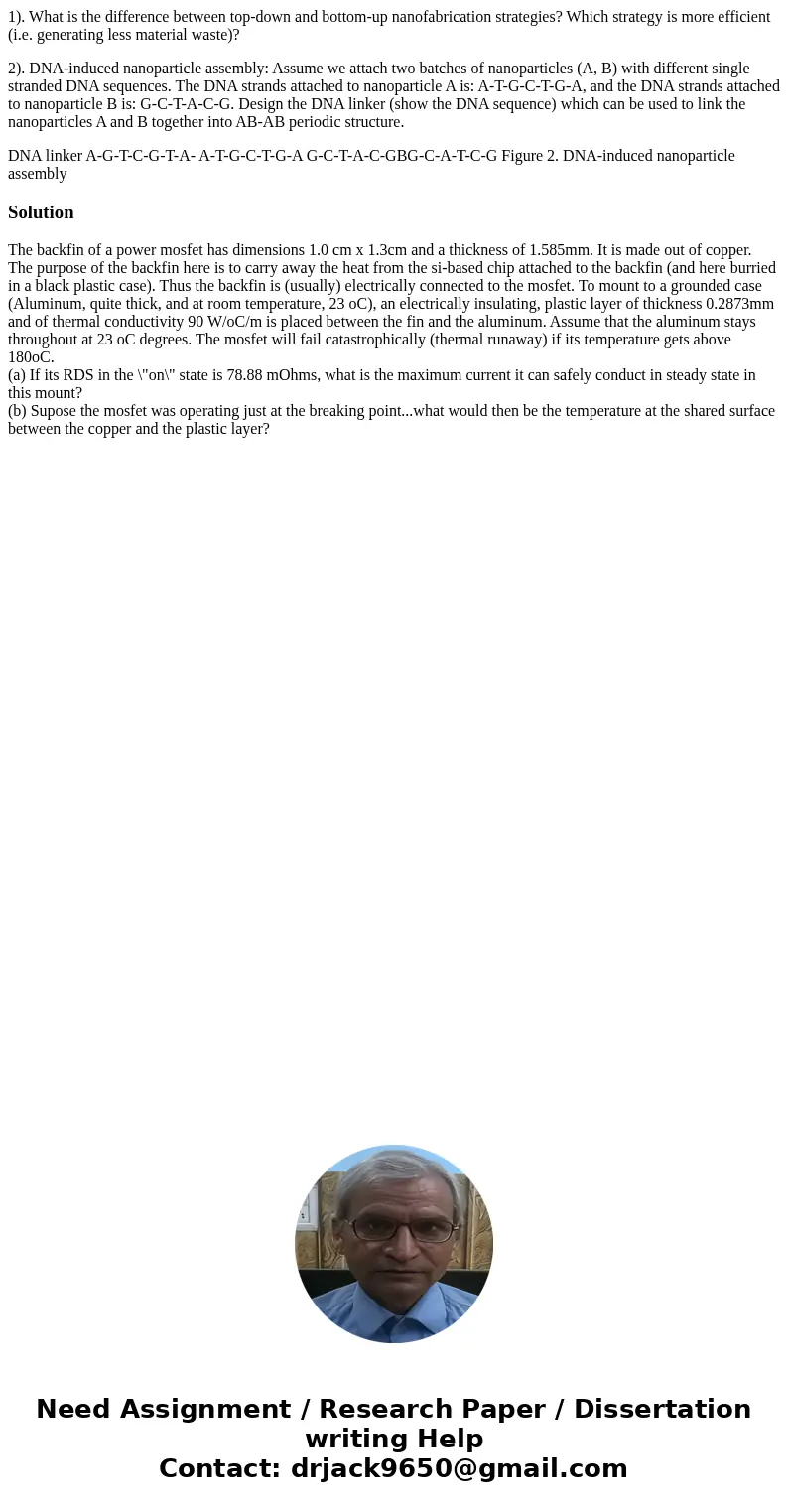1 What is the difference between topdown and bottomup nanofa
1). What is the difference between top-down and bottom-up nanofabrication strategies? Which strategy is more efficient (i.e. generating less material waste)?
2). DNA-induced nanoparticle assembly: Assume we attach two batches of nanoparticles (A, B) with different single stranded DNA sequences. The DNA strands attached to nanoparticle A is: A-T-G-C-T-G-A, and the DNA strands attached to nanoparticle B is: G-C-T-A-C-G. Design the DNA linker (show the DNA sequence) which can be used to link the nanoparticles A and B together into AB-AB periodic structure.
DNA linker A-G-T-C-G-T-A- A-T-G-C-T-G-A G-C-T-A-C-GBG-C-A-T-C-G Figure 2. DNA-induced nanoparticle assemblySolution
The backfin of a power mosfet has dimensions 1.0 cm x 1.3cm and a thickness of 1.585mm. It is made out of copper. The purpose of the backfin here is to carry away the heat from the si-based chip attached to the backfin (and here burried in a black plastic case). Thus the backfin is (usually) electrically connected to the mosfet. To mount to a grounded case (Aluminum, quite thick, and at room temperature, 23 oC), an electrically insulating, plastic layer of thickness 0.2873mm and of thermal conductivity 90 W/oC/m is placed between the fin and the aluminum. Assume that the aluminum stays throughout at 23 oC degrees. The mosfet will fail catastrophically (thermal runaway) if its temperature gets above 180oC.
(a) If its RDS in the \"on\" state is 78.88 mOhms, what is the maximum current it can safely conduct in steady state in this mount?
(b) Supose the mosfet was operating just at the breaking point...what would then be the temperature at the shared surface between the copper and the plastic layer?

 Homework Sourse
Homework Sourse